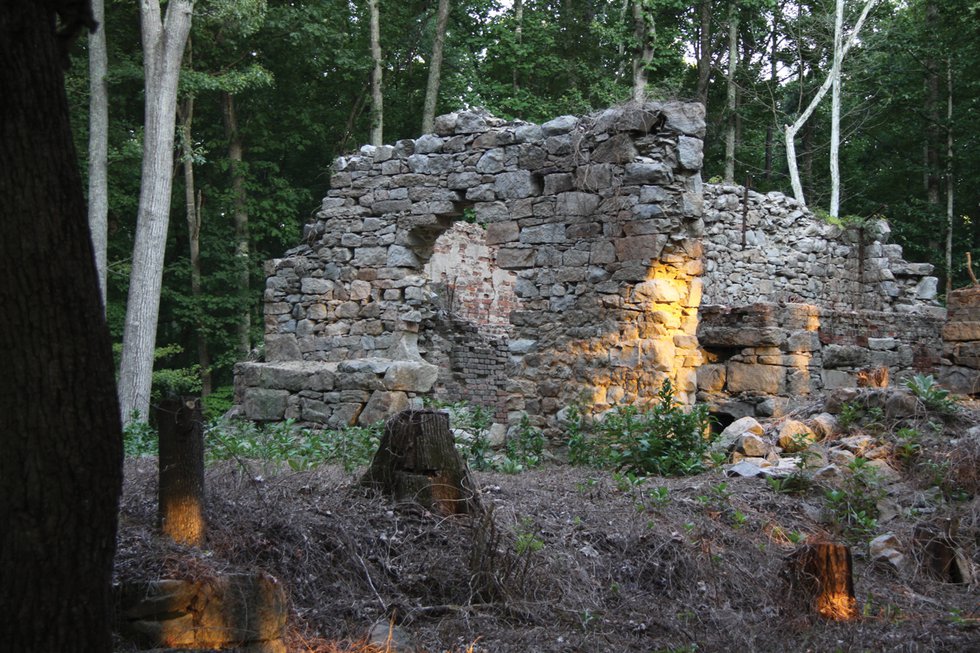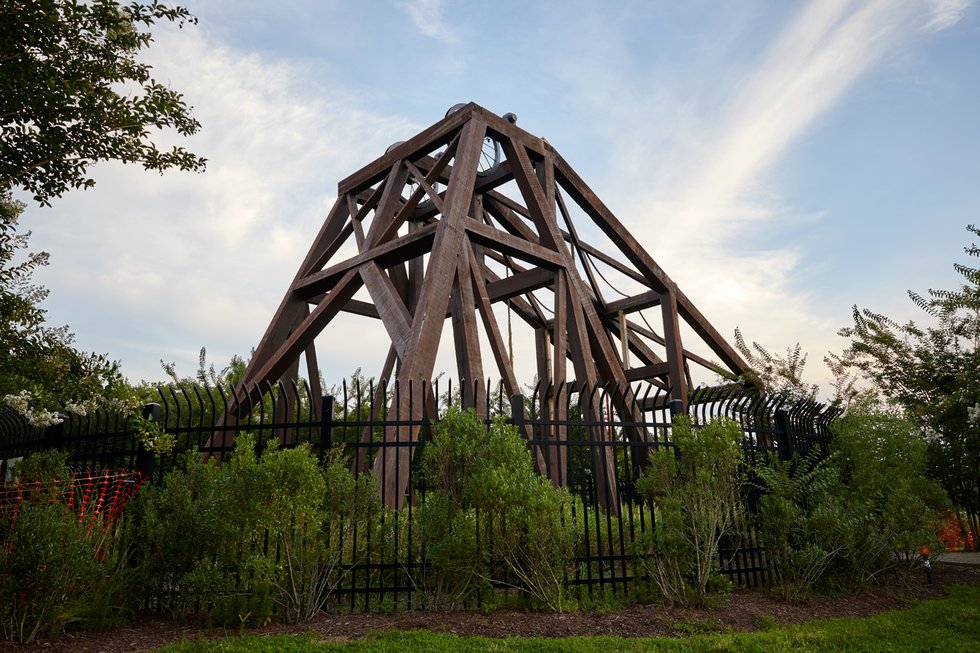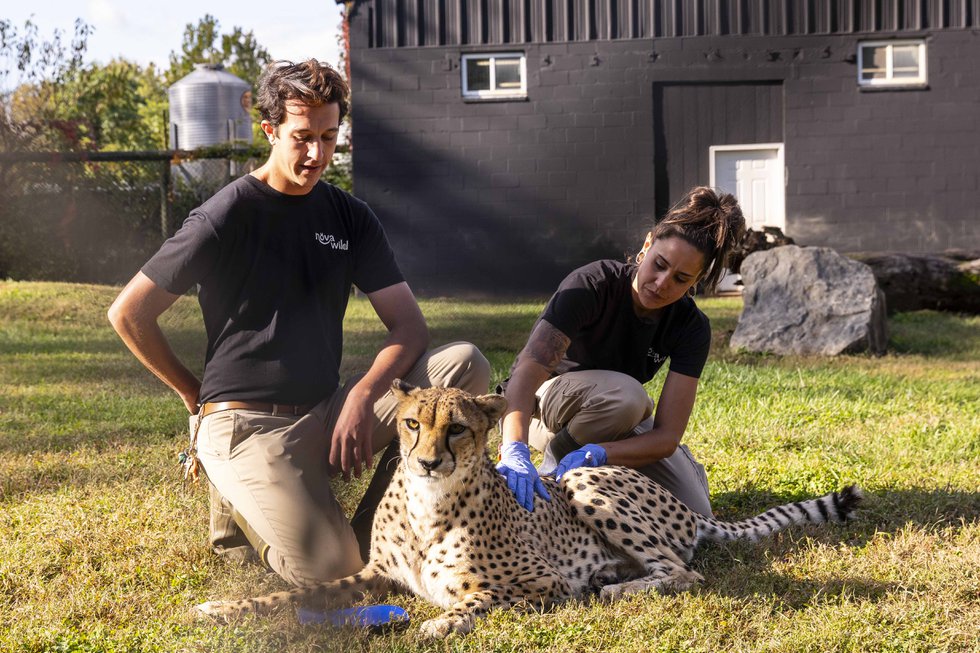
Mine ruins today.
Photo by Eli Christman
With its tumbled stone ruins, tree-lined paths, and wooden bridges, Mid-Lothian Mines Park, about 15 miles southwest of Richmond, makes a beautiful setting for prom, graduation, and wedding photos. But the area is more than just picturesque—those ruins are the remains of Midlothian’s very early, and literally groundbreaking, contributions to America’s industrial development.
According to Robert “Peppy” Jones, the former executive director of the Mid-Lothian Mines and Railroad Foundation, the French Huguenots mined coal in the Midlothian area in the late 1600s. “William Byrd II wrote about using coal from Midlothian in 1701, which is the first written account of it being used in Virginia,” says Jones. “The first commercial use of coal is dated to around 1730. Chesterfield coal was used to heat the White House by special request of Thomas Jefferson and was shipped to every colony in America. Chesterfield not only had the first commercial coal mines in America, but Virginia was the only colony mining coal up until around 1740.”

The Grove Shaft, circa 1911, before the mines were closed.
Photo courtesy of Chesterfield Historical Society of Virginia
Demand for Midlothian’s coal increased throughout the 1700s and into the 1800s, which brought about the need for improved transportation to deliver coal to expanding markets. The Midlothian area lays claim to the first railroad built in Virginia. It was a mule and gravity rail line that connected the Midlothian mines to James River wharfs in the Manchester area of Richmond. Ironically, improved transportation by rail and roads to more remote areas of the country, where higher quality coal deposits had been discovered, led to a reduction in demand for Midlothian coal.

Tourists posing at the mines, circa 1920s.
Photo courtesy of Chesterfield Historical Society of Virginia

A coal mining headstock replica sits on the site of a former mine shaft next to the park’s amphitheater.
Photo by Adam Ewing
The shaft mines in Midlothian lay open and dormant for nearly half a century. In the early 1970s, developer Thomas Garner Jr. and his brother William inherited much of the minefield property. They capped the open mine shafts as a safety measure and, to prevent further destruction of the aging mine structures, placed fencing around them.
Understanding the historical significance of the Midlothian mines acreage, Garner donated more than 45 acres of his land to Chesterfield County. With his leadership and foresight, the once-abandoned coal fields have been transformed into a beautiful, contemplative park with an 8.75-acre lake, walking paths, and historic guided tours. Along the walking path is the Wooldridge family cemetery, which Garner preserved and enclosed with a decorative wrought iron fence. A concert series now takes place every Saturday in May and August at the park’s amphitheater, where a replica of the headstock is constructed as it would have been in 1836. And, of course, it’s not unusual to see locals in formalwear posing for photos near the picturesque ruins. MidloMines.org
This article originally appeared in our October 2019 issue.








